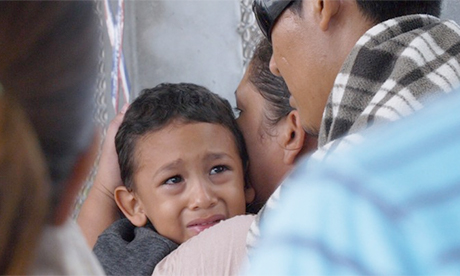When drug traffickers shot Wayner Berduo seven times last year, they didn’t stop there.
The men nearly beat him to death with their pistol grips, police reports say.
One bullet pierced Berduo’s eye socket, so after the attack, surgeons removed his left eye and stitched back together his face and his right arm, which now hangs limply by his side.
For days, Berduo has waited hours at a time in the long line of day-trippers, shoppers, and commuters headed for Brownsville, Texas.
When I met him, he was clutching a plastic bag of medications he hoped to bring with him—if the agents at the front of the line ever allowed him to legally enter the U.S. to apply for asylum protection.
So far, they have not.
Like hundreds of others stuck at the border in recent weeks, Berduo stands in a kind of purgatory spanning the Rio Grande.
Agents have repeatedly turned him around, telling him to “wait in Mexico” and check back every few hours.
I watched as they turned him back for the 20th time in four days, the agents explaining that they didn’t have enough room in the port of entry to process Berduo.
The United States government has separated more than 2,300 children from their parents at the border since May, a tactic that top officials in the Trump administration have described as a form of deterrence.
Delaying asylum seekers on the bridge appears to be part of this larger effort.
Fleeing dangerous conditions to seek refuge in America is getting more difficult for people like Wayner.
Last week, Attorney General Jeff Sessions overturned more than a decade of jurisprudence to rule that asylum claims based on gang violence or domestic abuse generally will not qualify.
The Trump administration encourages migrants to seek asylum at bridges—“You are not breaking the law by seeking asylum at a port of entry,” Homeland Security Secretary Kirstjen Nielsen tweeted Sunday—even as it has made it more difficult for them to do so. Continue reading
Source: The Atlantic 19 June 2018
Additional readingNews category: Features.




